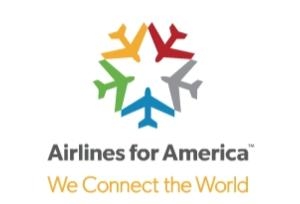White House Budget Proposes An Additional $3.8 Billion In Annual Taxes On Airlines And Their Customers
The fiscal year 2016 (FY16) budget proposed by President Obama has drawn opposition from airline industry trade group Airlines for America (A4A) based on what the association calls "several unnecessary tax increases," most notably a dramatic hike of the passenger airport tax (Passenger Facility Charge (PFC)) from $4.50 to $8. Under this budget proposal, a family of four taking one round trip could pay up to $128, versus $72 presently – a $56 increase. All told, the White House is proposing an additional $3.8 billion per year in taxes on airlines and their customers, up from the more than $20 billion they pay today.

Currently, travelers pay $63 in federal taxes, or 21 percent of a $300 one-stop, round-trip domestic ticket. If the Administration’s proposed budget were passed, it would increase the federal tax amount to $77, or 26 percent of the ticket price – an incredibly onerous and excessive burden on airline passengers.
Most egregious is the nearly 80 percent increase of the PFC, effectively a passenger airport tax, paid for every departure. A4A called the increase unnecessary because airports have ample funding resources without dramatically increasing a tax on airline passengers.
A4A noted that U.S. airlines support infrastructure improvements and are committed to enhancing the passenger experience at airports and in the air as evidenced by more than $52 billion spent on airport infrastructure at the country’s 30 largest airports since 2008. This commitment to infrastructure has led to new runways at Chicago O’Hare, Washington Dulles, Seattle, Fort Lauderdale and Charlotte, new international facilities at Atlanta and Los Angeles, and new or renovated terminals in Miami, Las Vegas, Houston and San Francisco among others. From 2000 to 2013, airport revenues per passenger grew 52 percent — far exceeding inflation (the consumer price index rose 35 percent) and the average domestic airfare (which rose 22 percent including ancillary fees) during the same period.
2014 PFC collections have rebounded to a record high level of $2.9 billion.
According to U.S. airports’ financial reports filed with the Federal Aviation Administration, they have more than $11 billion of unrestricted cash and investments on hand.
All U.S. airports rated by Standard & Poor’s enjoy investment-grade credit ratings, which ensure ample access to the bond market to fund necessary airport capital projects. Bonds remain the primary funding source for airport capital projects, and to our knowledge, no airport has been prevented from securing bond funding for needed improvements. With an uncommitted balance of $6 billion in the Airport and Airway Trust Fund, the highest level since 2001, funding for the Airport Improvement Program is secure and will continue to provide federal, taxpayer supported funding for airport projects.
The White House budget also proposes to:
- Increase the security tax from $5.60 per one-way trip to $6 in 2016, and by an additional 50 cents annually from 2017 to 2019 when it reaches $7.50 per passenger. On average, this will cost passengers and airlines over $700 million annually.
- Reinstate the TSA Aviation Security Infrastructure Fee (ASIF) at its previous level of $420 million annually.
- Increase the customs tax from $5.50 to $7.50 and the immigration tax from $7 to $9, costing $400 million annually.
“Airlines drive the economy and create jobs. With our nascent economic recovery, we should be doing everything we can to bolster those industries that enable commerce, like airlines, rather than adding unnecessary burden to airline customers who are already paying their fair share,” said A4A President and CEO Nicholas E. Calio. “We can do better than burdening passengers with a tax that is not needed, and for the sake of our economy and jobs, we must. This is exactly why we have called for a National Airline Policy.”
 ANN's Daily Aero-Term (04.26.24): DETRESFA (Distress Phrase)
ANN's Daily Aero-Term (04.26.24): DETRESFA (Distress Phrase) Aero-News: Quote of the Day (04.26.24)
Aero-News: Quote of the Day (04.26.24) ANN's Daily Aero-Term (04.27.24): Direct
ANN's Daily Aero-Term (04.27.24): Direct ANN's Daily Aero-Linx (04.27.24)
ANN's Daily Aero-Linx (04.27.24) Aero-News: Quote of the Day (04.27.24)
Aero-News: Quote of the Day (04.27.24)



